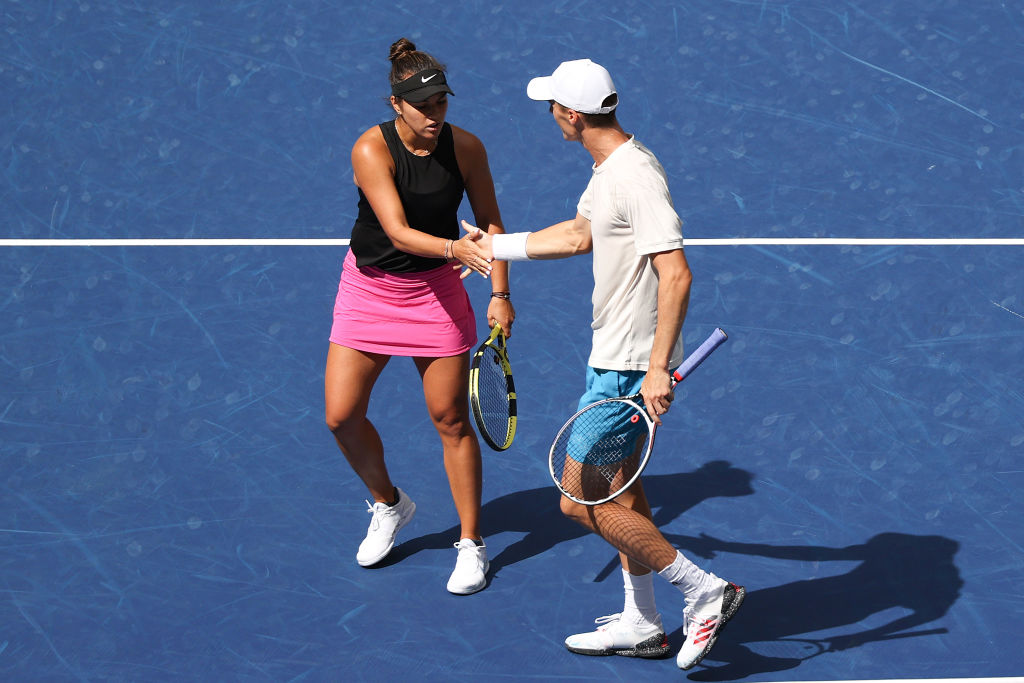Sophie Nelson: An ATP and WTA merger could be a true sporting force

Rumours of a merger in the world of tennis between the ATP, which runs the elite men’s tour, and WTA, its women’s counterpart, are long-running.
The pandemic amplified calls to unite the two organisations after the sporting calendar was disrupted and revenues impacted.
A more unified system for the game could reap commercial benefits in providing an enhanced fan experience as well as becoming a pioneer in gender equality for the world of sport.
Professional tennis could undoubtedly benefit from some cohesion, with the current model split between the ATP, the WTA, the International Tennis Federation and the four Grand Slams.
According to a 2018 report by SportBusiness, tennis accounts for 1.3 per cent of the total value of global sports TV and media rights which is surpassed by golf, hockey and cricket.
This is extraordinary for a sport that boasts a global fanbase of more than a billion and includes some of the highest paid athletes in the world.
A more unified organisation would lead to a more marketable product, where media and sponsorship agreements could be negotiated together.
This would overcome the fragmented TV rights that are currently in place, which sees fans scrambling to various platforms to watch the top-tier events.
According to rEvolution’s Fans Sponsor Rankings Index, a survey that explored a sports property’s reach in the US combined with the effectiveness of the sport’s sponsors, the profile of tennis in North America is in particular need of a boost. The ATP and WTA ranked last out of 14 properties.
A joint product allows for a greater offering which would create increased opportunities for more sponsors and more activation as a result.
There is no greater example of how a merger could significantly benefit the sport than the four majors, which combine the men’s and women’s draw side-by-side and attract a huge audience through the mixed doubles discipline where fans relish the opportunity to see a different approach to the game.
The disparity between the two organisations has come a long way since the ATP was formed in September 1972, with the WTA originating just nine months later. It was a far cry from equal prize money, and the appetite for the men’s game compared to the women’s was unparalleled.
Nowadays tennis is considered a leader in gender equality with the four Grand Slams paying out the same winnings to men and women and its platform for female players to go on to become pop culture icons.
This is no truer for 2021 Australian Open Champion Naomi Osaka who came in second on this year’s SportsPro Most Marketable Athletes Report and continues to rack up sponsor support from blue-chip brands despite taking a step back from the sport.
The rise of the women’s game was also visible at this year’s US Open where Emma Raducanu remarkably breezed through the draw to win a final that had an audience of 9.2m in the UK, after Channel 4 snapped up the rights in a last-minute deal.
The final between two unseeded teenagers attracted a bigger audience than the men’s final, which saw the top two ranked players in the world face off with Novak Djokovic aiming for a Calendar Slam and a chance to break the all-time Grand Slam record.
Merging two huge organisations is no easy feat and accounting for the different tournament calendars and imbalances in prize money outside of the Grand Slams is a mammoth task.
There is also the argument that the WTA would see greater benefits than the ATP, which has often been the rationale from the men’s tour in rejecting such a proposal and one the likes of Billie Jean King have had to debate since the 1970s.
However, the gap in profitability is shrinking and may continue to decrease in a post-Big Three era. Attitudes are also shifting with Swiss icon Roger Federer sparking a debate on the issue last year with a tweet in favour of a unified model, swiftly echoed by Rafael Nadal and Stan Wawrinka.
Moreover, with the success of the collaboration of the two marketing teams on an award-winning digital content series, Tennis United, and a recent, joint commercial deal with e-learning platform TopCourt, there are important steps being made.
Tennis is uniquely positioned to be part of a landmark move in global sport with a merger that can ultimately grow its audience and attraction for sponsors.
Sophie Nelson is a Junior Account Director at global sports marketing agency rEvolution
